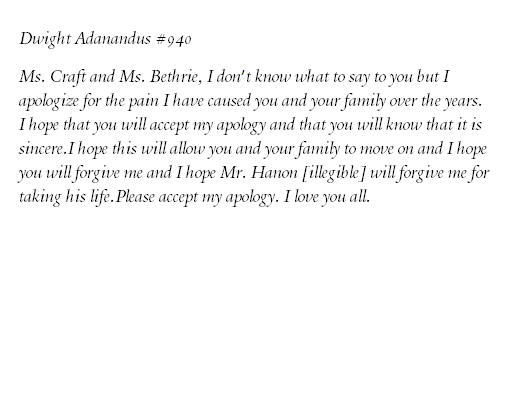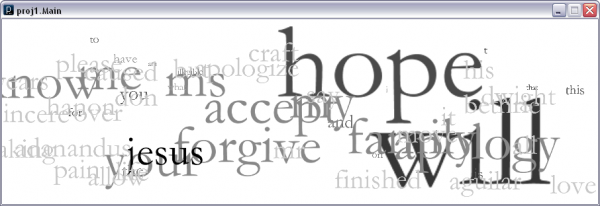Words from Beyond Hope
Words from Beyond Hope is an attempt to visualize the last statement made by criminals shortly before they are executed.
The Texas Department of Criminal Justice maintains a list of executed offenders’ last statements, along with their gender, racial, photo, crime and victims, even their unappetizing last meal request. I keep a collection of related links on my blog post here. A sample of the statement is here-
It strikes to me how the simplest words repeat in all the statements. This is partly due to, as Golan pointed out, their limitation on education. Partly, I think, because it’s the most honest statement flowed right out of their mind, with no rhetorical decoration.
My design try to strike a balance between reserving the repelling reading experience and showing the similarity shared among all those executed. I envisioned a canvas with words appearing at the rate of heart beat, and a bit kinetic effect to resemble heart beat and life, and time elapsing. Then the words gray out and scatter around the screen, disappearing a bit as the life did. With the font proportional to occurrence prequency, the piece immediately highlight the common words from all last statements at the first glance. If viewer stays with it, they could read the statement words by words, as if viewing the writing composing them. In this way new information are conveyed to viewer and the interaction can carry on for a longer period of time.
Although a number of compromises had to be made in the final piece, one detail comes out as a little surprise to me. The collection of the most common words seems to form a message that is almost the average of the statement themselves.
Image below: at a glance, you’ll read ” I love you all”,”god love you all”, “I love my family”, “thank you”… the very phrases that’ll stay in your head as you read the actual statement.
NEXT STEP
The discrete words popping don’t do a great job suggesting they’re actual readable sentences and lose the power of the raw statement. Giving them a smooth in and out and allow them to stay “in focus” for longer may be a quick fix to encourage actual reading.


